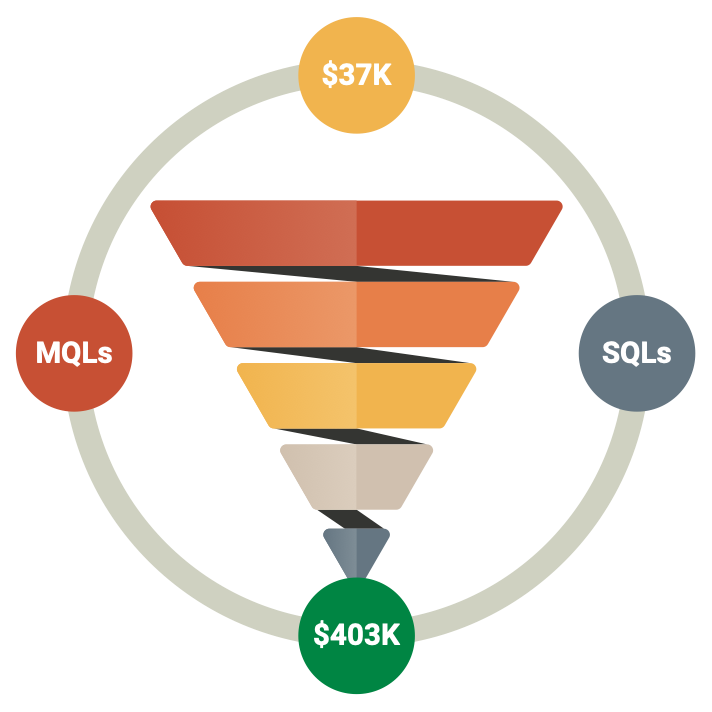Some of the ways data is utilized in transportation and logistics to improve operational efficiency and increase profitability.

There is a vast amount of data collected within transportation and logistics, all of which can be leveraged to continuously improve operational efficiency and increase profitability. Every aspect of each load and the drivers transporting them are recorded to monitor exactly where changes are needed in the event something doesn’t go as planned. A variety of transportation management systems (TMS) are out there to keep vehicles on the road, so people and products make it to their destinations safely and on time. Some of these technologies include:
Transportation and logistics data can be turned into dollars in a variety of ways, but for this blog post, I’ll just be focusing on a few key areas that have to do with some common challenges faced within the industry. These challenges include driver retention, integrating acquisitions’ systems and data, vitals reporting, and single point of failure spreadsheets.
Driver Retention
The first challenge I’m discussing is a pretty huge deal, considering the fact that the transportation industry can’t function without drivers, unless of course you’re planning on going fully autonomous. But for companies who aren’t quite ready to implement that kind of technology, keeping drivers employed is a must. Believe it or not, this is something that can be done by simply leaning into the data and making adjustments where they’re needed. The data can be utilized to develop a plan for turnover prevention that can help increase driver satisfaction and keep more drivers on the road. Some of the metrics and specific driver details to consider when attempting to reduce turnover include:
- Total number of drivers
- Distance traveled within the last two weeks
- Number of excused and unexcused “call-offs”
- Driver feedback
Integrating Acquisitions’ Systems and Data
Strategic acquisition can be a beautiful thing for an organization, especially in terms of boosting profitability. However, when companies are brought together, their data also has to be, which is not necessarily the easiest task, as new data acquired will not always reconcile with the way the business currently operates. In order to get a holistic view of the business, all data must be properly aligned. This is often done through extract, load, and transform (ELT or aka ETL) processes, which takes a common set of business rules to align the data across commodities, customers, divisions, fleet, drivers, etc., as well as common business calculations such as rate per mile, fuel costs, “accessorials,” total charges, revenue, and profitability all into account for as smooth an integration as possible. First, the data is extracted (E) from each particular source, from transportation management systems (TMS) like McLeod and blended with other relevant operations systems like WorkHound, Omnitracs, etc., and then it is loaded (L) into a specific target data repository (a DataLakeHouse or data warehouse), where it can then be transformed (T) for analytical purposes. Finally, the insights gathered can be used to effectively drive business decisions from a holistic view of the organization.
Vitals Reporting
Vitals reports are (not to be obnoxiously obvious, but) vital! They include common definitions and calculations for business metrics that keep everyone on the same page about how the business is operating, which is pretty important 😏 Pretty much every department depends on these critical data points in order to operate efficiently. These reports are often siloed away in various different locations, making them virtually inaccessible to many of the people who need them, resulting in inefficiencies throughout the business. Consolidating data in a centralized location, where everyone can view the common datasets by date, driver, division, vehicle, fleet, movement, order, commodity, stop, customer, and any other important slices of the business creates a much more unified and smoothly-run organization. Additionally, when information is easy to find, it simplifies the jobs of critical personnel, making reporting a breeze, so they can focus on other high-value tasks maximizing both time and money.
Single Point of Failure Spreadsheets
Over the years, many transportation companies have seemed to be a little on the slow side, when it comes to adopting technology, keeping their processes analog while the rest of the world (or at least most organizations in other industries) shifted over to a digital undertaking much quicker. In many transportation and logistics organizations, operational and financial data is often captured in a spreadsheet that is seen as the single source of truth for key metrics that inform the business. There’s usually a single person who maintains the spreadsheet, knows where to pull the data from manually, and provides calculations that everyone trusts. Not only is this approach outdated, but it also creates the potential for a single point of failure. Automating these processes allows seamless tracking of movements, orders, assets, maintenance, and driver details that enable organizations to effectively coordinate their fleet, increase efficiencies, reduce costs, oh, and did I mention, turn their data into dollars?! This is an integral part of the digital transformation journey that every transportation and logistics company should make a priority in order to remain competitive and achieve growth.

Ok, so let’s cut to the chase here and talk about the solutions offered by DataLakeHouse
The transportation industry is turning to DataLakeHouse to take the guesswork out of the analytics process. DataLakeHouse is a cloud-based, end-to-end, self-service business intelligence and analytics solution with advanced machine learning capabilities. The platform enables users to extract and load all of their data into Snowflake (not to mention, at a cost much lower than competitors), giving them a single source of truth that can be accessed by anyone within the organization, with permission settings that are fully customizable. This raw data can then be transformed by DataLakeHouse to provide deep insights for effectively guiding business decisions. DataLakeHouse offers a comprehensive view of the organization, coupled with descriptive, diagnostic, predictive, and prescriptive analytics, that are based on proven industry-specific, pre-built models (which aren’t limited to the transportation sector, by the way), that can be tailored to meet the needs of any company and empower it to become truly data-driven.
It’s machine learning technology thoroughly analyzes internal and external data to find patterns and provide businesses with specific suggestions that not only raise cognizance, but also have the potential to reduce costs and increase efficiencies throughout the entire organization, when such actionable insights are implemented. The platform’s personalized data catalog and fiscal calendars offer a central point of reference for all workloads, creating additional uniformity across departments and facilitating an incredible level of accuracy in financial reporting. Organizations are also given the opportunity to aggregate specific data pertaining to a single customer, product, order, campaign, etc. for in-depth analyses that enable improvements to be made when and wherever they are necessary.
To learn more about taking your transportation organization down a data-driven path to success, click the button below to download a copy of our White Paper, How Data is Redefining the Transportation Industry and feel free to share it with your colleagues 😉




